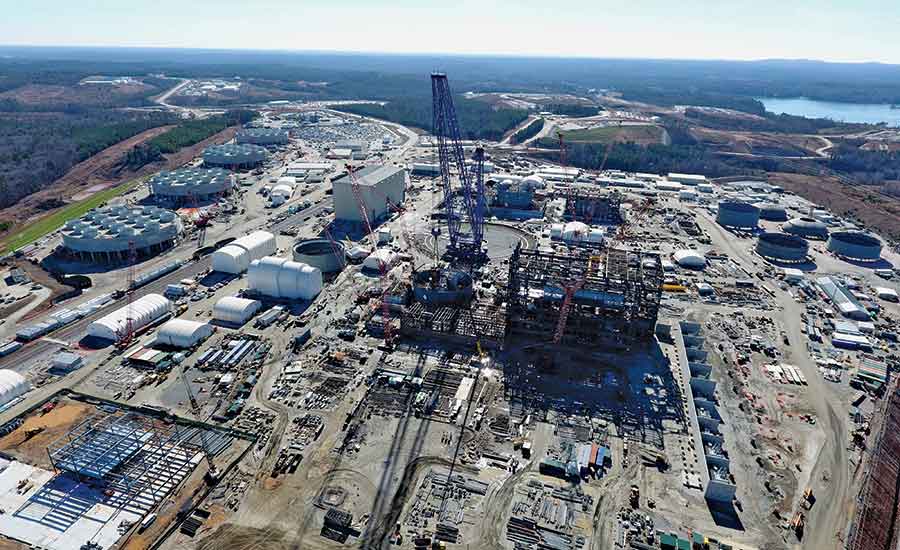Market gyrations produced varied results for publicly held firms in recent quarterly reporting. “Second-quarter earnings were volatile for both contractors and material suppliers due to inclement weather, moderate current market growth and/or select large project issues,” noted Brent Thielman, senior research analyst at investment firm D.A. Davidson, on Aug. 15.
Fluor Corp. was among those with big bottom-line impacts from troubled jobs, particularly the July 31 halt of a South Carolina nuclear megaproject, on which it was construction manager, due to cost issues. Problems on three fixed-price, gas-fired power-plant projects also forced the firm to book a $124-million quarter charge. CEO David Seaton cited “improper estimating, craft productivity and equipment issues” in an Aug. 3 analyst call, with 2017 per-share earnings estimates cut to between $1.40 and $1.70 from $2.25-$2.75. But Fluor isn’t giving up on fixed-price power-sector contracts, and it still has a strong backlog, he said. “Fluor remains a show-me story, despite what had been historically a better track record of execution, potential green shoots in mining and infrastructure and … energy,” said Jamie Cook, Credit Suisse senior analyst. Unexpected energy job losses also forced CB&I to take a $548-million quarter charge and a $304.1-million loss on $1.3 billion in revenue, compared to net income of $115.6 million on $2.2 billion in revenue last year. Babcock & Wilcox also noted a hit to earnings, with $115 million in charges on six renewable-energy projects.
Tutor Perini Corp. exceeded Wall Street expectations, with $30 million in net earnings reported, despite mechanical contracting project writedowns in New York, said CEO Ron Tutor. Revenue fell 4.6%, but backlog is “at an all-time record,” he said. Baird analyst Andrew Wittmann is bullish on Jacobs Engineering, with quarter profit, revenue and backlog all up and “cleaner” earnings at CH2M, which Jacobs on Aug. 2 announced it intends to buy, despite the latter firm’s upcoming arbitration over an abandoned Australia power-plant contract. He terms it “a key risk that remains an overhang on the transaction, though well telegraphed by management.”






Post a comment to this article
Report Abusive Comment